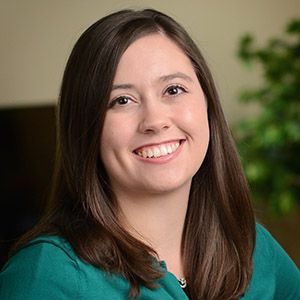Our state’s educational leaders have some big goals. In the next ten years, they want Michigan to be a Top 10 state for education.
But we still have a long way to go, which begs the question: What’s getting in the way of progress in Michigan’s education system?
There are a few commonly-cited culprits, including our state’s alarming literacy rates, neglect of social and emotional learning (SEL) in favor of academic development and failure to address the needs of children in poverty.
Efforts to further our state’s educational progress include “revolutionizing literacy instruction, providing students with differentiated instruction through multi-tiered systems of support (MTSS) and blended learning, addressing the whole child,” incorporating PBIS practices into school systems and teaching with poverty in mind.
In celebration of our 20th anniversary, we hosted four panel discussions on Mitch Albom’s radio show on WJR 760. In this segment, Mitch Albom explores barriers to progress in Michigan’s educational system with a panel of the leaders of several of Michigan’s educational organizations, including:
- Don Wotruba – Executive Director of the Michigan Association of School Boards
- Tina Kerr – Deputy Executive Director of Michigan Association of Superintendents and Administrators
- Amie McCaw – Principal at Sunset Lake Elementary, representing the Michigan Elementary and Middle School Principals Association
Watch the 8-minute video below or read the abridged transcript to learn more about the history of Michigan’s Top 10 in 10 initiative and explore what factors have historically impeded progress in our state’s education.
Want to hear more from Mitch’s conversation with Michigan educators and students? Check out his other panel discussions on our state’s literacy crisis, how online learning really works and how methods of delivery in instruction have changed dramatically to meet the needs of today’s students.
ABRIDGED TRANSCRIPT
Mitch Albom (MA): Let’s talk first about where we’re at with education in this state. It’s not particularly good news when you talk about where Michigan ranks relative to the rest of the country. Where is that, and why is that?
Tina Kerr (TK): Well, first of all, I’d like to express that one of the things Michigan has done is the new Top 10 in 10. That’s how we’re going to work together to improve that ranking and improve, obviously, education across the state.
MA: What does Top 10 in 10 mean?
TK: Top 10 in 10 was created by MDE — with partnerships with all the associations and locals — it’s been a big collaborative, and we’ve really set some high standards and criteria that we want to meet by being in the top 10 states in the next ten years.
MA: And how far away are we from this right now, Amie?
Amie McCaw (AM): We have some work to do. We’re two years into this. What I love is that things are going in the right direction — instead of talking just about the mandates and making it all about compliance — the Top 10 in 10 is trying to make sure that we’re looking at creative thinking, that we’re getting to evidence-based practices, and that we’re looking at the situations — such as literacy, poverty, the social/emotional things that are hitting our schools — and with the Top 10 and 10 lead, I think we’re heading in the right direction to move us from the bottom to near the top 10.
MA: What’s the difficulty in changing how things work in education? Is there sort of a systemic memory that takes a long time — like moving an ocean liner — when you want to change an approach in education?
Don Wotruba (DW): Everybody has taken part in education. Everybody has said, “I graduated from high school.” And they think they know how education works. And so, myself — representing the boards of education and being that liaison to the local communities — sometimes it’s moving the expectations of parents and citizens to understand that the education that a kid in 4th grade today needs is very different than the one we might have received in the 70’s or 80’s. And that’s hard for parents and citizens to sometimes grasp when schools are coming up with new ideas. They get a lot of pushback. I think we have to all own how Michigan has been doing in education, and we need to move forward.
MA: But, in fairness, I mean, there’s been a lot of reform in education and a lot of it has ended up blowing up in our faces. One of the reasons that we’re so behind Cyprus in math is because over the years we’ve moved away from a lot of basics. You know, I’m old enough to remember all the different movements in education, when it was like, “Math is not necessary right now. What we need is critical thinking.” And we ended up not learning a lot of the basics. So can you blame parents for being a little skeptical of new ideas?
AM: We tend to ride the pendulum in education. All of a sudden it’s “whole child” or “whole reading,” when we think about our reading strategies. Going back to some of the things that the MDE Top 10 and 10 is trying to think about: Okay, where have we come from? What are the things we have not done right? What is the vision? How can we make sure all stakeholders are involved? That’s another piece that is different than what we have done in the past. This is bringing all the stakeholders together. We have to have our families involved. We have to have our state legislators involved in this. We have to have people like Michigan Virtual who work with online practices involved in this. It’s not public schools vs. charter schools. We’re all in it together. That’s a refreshing place we’re going to start to go to.
MA: If you each had to identify one thing that is you thought was the biggest culprit for why currently Michigan is not top 10 in the nation, what would that be?
DW: I think it’s a moving target. The legislature or MDE over the last 15-20 years, there’s a new flavor of the month every year, and that has put schools in a place to never ever be able to focus and actually engage and move a product forward.
MA: New flavor of the month, meaning. . .?
DW: Education. It’s fifth graders get a laptop this year. It’s first-graders get a laptop. It’s one-to-one computing. You know, everyone comes up with something different. They might all have been good ideas, but none of them have the time to actually be implemented and actually be successful.
MA: Interesting. Tina, what would you say?
TK: Well, we’re educators, and Don is exactly right. One of the problems is that it takes a good five years for a reform to take root and actually make a change. And when you’re constantly changing what those reforms look like, it’s very difficult for us to make gains.
MA: So picking a lane and staying in it is a big challenge.
TK: Absolutely.
MA: Amie, would you identify something different?
AM: No, I think that’s right. I’d love to see a long-term vision, and for us all to stay on the same path. Of course, in education, we have to be able to keep up with these things. Because we don’t want our children to have the education we had. What we’re teaching now has to be different. We have to stay with the times. But keeping a target in one place — keeping us all together united toward one vision — is definitely the way to go.
MA: Who could do that? Is there one person who has that kind of authority in the state who could see that through?
TK: I think it’s collective. And that’s part of why the top 10 in 10 initiative is going to be so powerful. Because we really have, as a collective community of educators, come together and said, “Enough is enough. We agree. Our children need the benefit of a high-quality education, and we need to give it to them.” And the next issue, that I do think is an issue, that Don can speak more to, is the funding piece of it. Let’s put our money behind education, behind our kids, and let’s make a difference.
MA: How much of it weighed down by the fact that Michigan is a pretty diverse place? I mean, you talk about a state. But you have southeast Michigan in Detroit and the issues that exist in Detroit, the largest population center, are not the same as the issues that exist in Alma. Or way up North or in Grand Rapids, and yet you’re trying to do a statewide thing. How much of a challenge is that?
DW: I think the commonality there is: Poverty affects every district and every kid. And we really need to look at moving, not to necessarily more money, but to a system that recognizes that each kid has different needs walking into school. We need to fund based on that, not based on the zip code that they live in, but what are the needs of that kid and how do we make sure they get the resources they need so that everybody can move up? Otherwise, right now, our system is very standardized in its distribution. It doesn’t really serve the needs of the kids.

